July 2017
July 31, 2017
Limited edition mayonnaise jar
Duke's mayonnaise is celebrating 100 years in business by selling limited edition glass jars of its mayonnaise — as opposed to those plastic jars all condiments come in nowadays.Duke's has rather passionate followers. It's some kind of Southern thing. Southerners LOVE their mayonnaise, especially mayonnaise and tomato sandwiches. And Duke's is held in high regard as being the premier Southern mayonnaise. I've had it, and I agree it's pretty good. It's not a sweet mayonnaise. In fact, it has no sugar in it at all. It's like Hellmanns, but a bit tangier.
Anyway, some people love the stuff so much that they've arranged for their ashes to be stored in a Duke's jar after their death. So if you order the limited-edition jar, that's one thing to do with it once you've eaten the mayo.
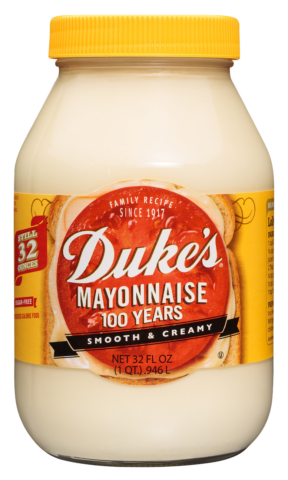
Posted By: Alex - Mon Jul 31, 2017 -
Comments (6)
Category: Death, Food, Mayonnaise
Mystery Illustration 52
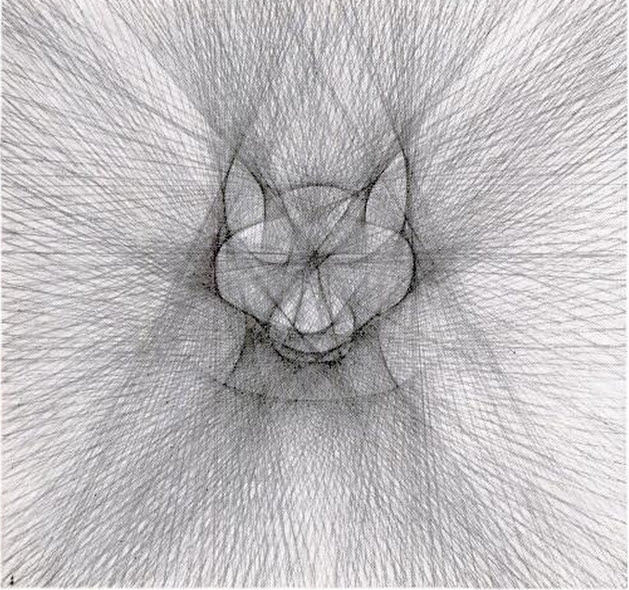
What is the secret technique behind this drawing?
The answer is here.
And after the jump.
More in extended >>
Posted By: Paul - Mon Jul 31, 2017 -
Comments (4)
Category: Art, 1940s
July 30, 2017
Electric horse for exercise
Evidently there's a long history of horse riding simulators as exercise devices.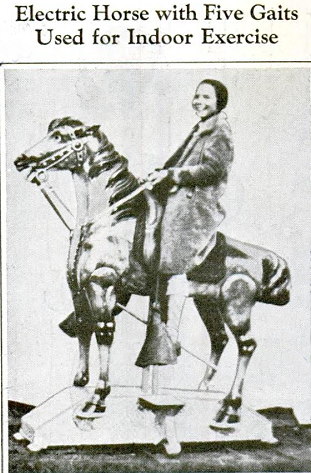
Electro-mechanical horse with five gaits
ranging from a trot to a running gallop.
Some of the benefits of horseback riding as a form of exercise can be obtained indoors with the aid of an electro-mechanical horse which not only provides fun for the children but sport for grown-ups as well. At a touch on the reins, the horse can be induced to break into any one of five gaits ranging from a trot to a gallop.
Source:Popular Mechanics - May 1936
A modern-day simulator — that no longer looks like an actual horse:
Update: another old time indoor horse exercise machine.
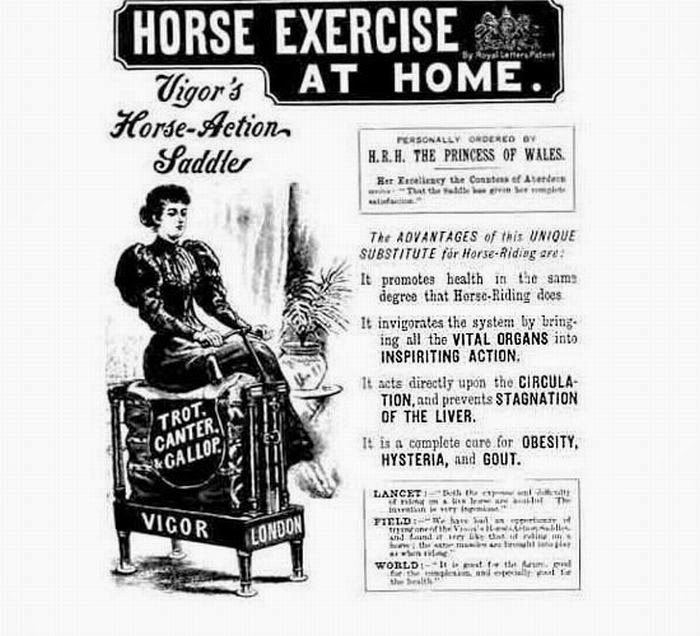
Posted By: Alex - Sun Jul 30, 2017 -
Comments (5)
Category: Exercise and Fitness
The Films of Suzan Pitt
Wikipedia page.
Posted By: Paul - Sun Jul 30, 2017 -
Comments (6)
Category: Art, Avant Garde, Cartoons, 1970s
July 29, 2017
Bacon Costume
George J. Nicholls, author of the 1917 book Bacon and Hams, dressed as a slab of bacon.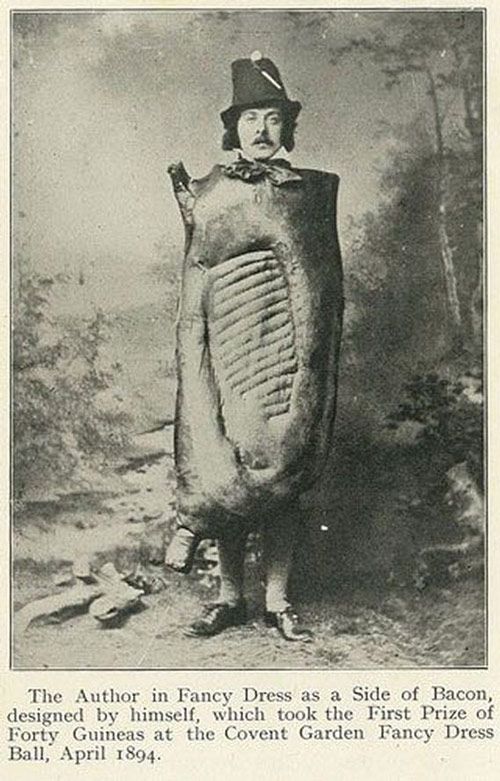
More info about this rare and curious book at CookingIssues.com and Wikipedia.
Posted By: Alex - Sat Jul 29, 2017 -
Comments (2)
Category: Bacon, 1910s
Egg Massage
Posted By: Paul - Sat Jul 29, 2017 -
Comments (0)
Category: Beauty, Ugliness and Other Aesthetic Issues, Eggs, 1960s, Europe
July 28, 2017
Road Roller Endorsed by Doris Day
An odd example of a movie cross promotion from 1949. Perhaps fans of Doris Day would also be interested in her favorite road roller!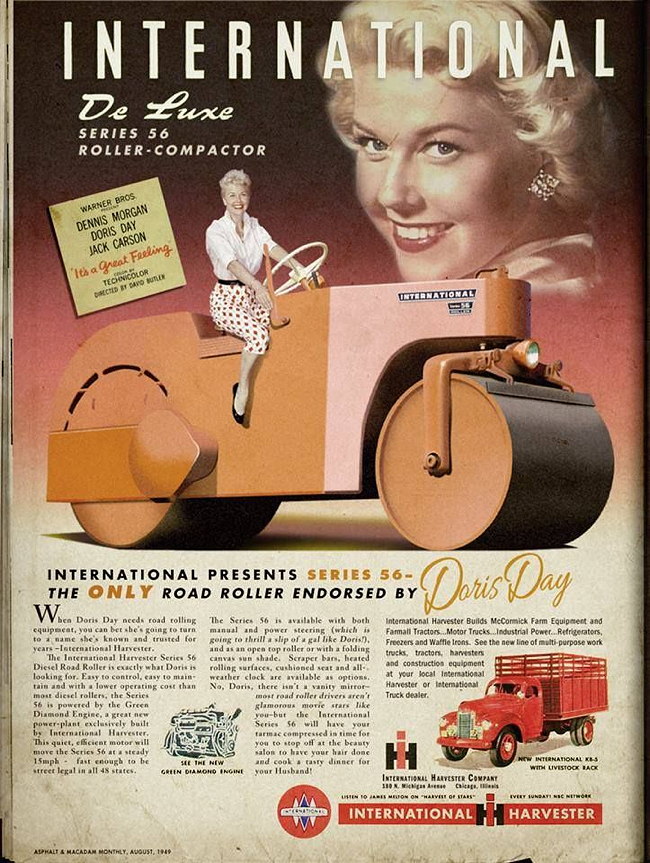
I'm not entirely sure if this ad belongs here or on the Museum of Hoaxes, because there's some odd things about it. For a start, what is this magazine Asphalt & Macadam Monthly that the ad supposedly appeared in? This ad is the one and only reference to such a magazine that I can find. And did International Harvester ever produce a De Luxe Series 56 roller-compactor? Again, this ad is the only reference to it I can find.
However, print copies of the ad appear to be for sale, which would be odd if it was a fake ad someone had photoshopped together.
But it's possible it was a fake ad produced in 1949. The movie the ad mentions, It's a Great Feeling, was (according to Wikipedia) a "spoof of what goes on behind the scenes in Hollywood movie making." So maybe a ridiculous/fake cross-promotion was part of the marketing for the movie?
More in extended >>
Posted By: Alex - Fri Jul 28, 2017 -
Comments (15)
Category: Movies, Advertising, 1940s
The Orgatron, or, Tote-a-Tune
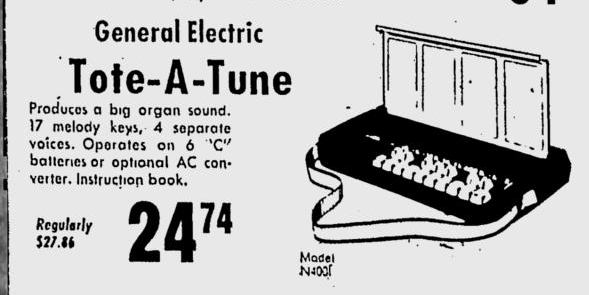
Ad source.
Another pre-digital electronic keyboard.
Some background here.
And here.
Posted By: Paul - Fri Jul 28, 2017 -
Comments (4)
Category: Music, Technology, 1930s, 1970s
July 27, 2017
Conditioning experiment on Soviet child
I ran across these intriguing images in an old copy of Newsweek - March 28, 1960.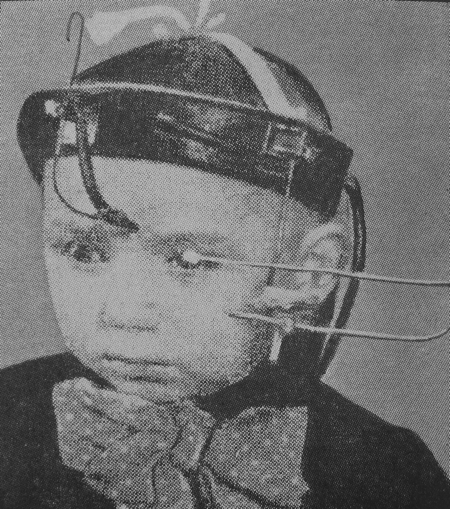
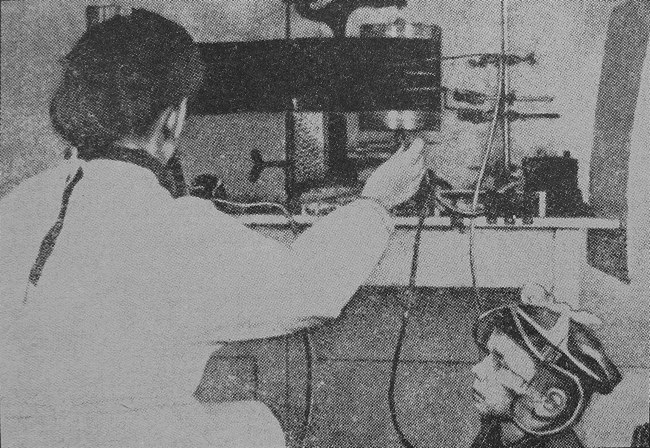
Unfortunately there wasn't much explanation about them. The caption read: "Psychological sputnik: Year-old Soviet child rigged for conditioning experiment."
An accompanying article, about the visit of Soviet psychologist Alexander R. Luria to the U.S., didn't refer to the images at all. But offered this hint:
Luria's own goal and the goal of Soviet psychopedagogy, is important, too: Increasing the learning ability of Soviet children by 25 per cent.
"Think of it," he said, "such a finding would be worth billions of dollars. It is no less important than a sputnik."
So the images must be showing some kind of weird Soviet experiment to boost a child's IQ.
The kid would be too young to be Putin. Though there is a slight resemblance.
Posted By: Alex - Thu Jul 27, 2017 -
Comments (3)
Category: Psychology, 1960s
Yanks in the UK
This makes Brexit all the more mandatory!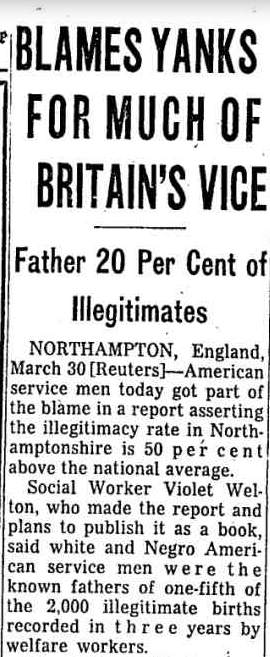
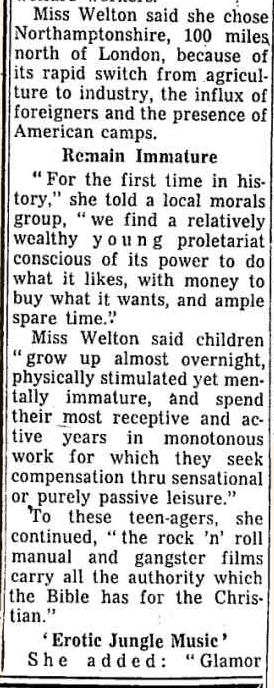
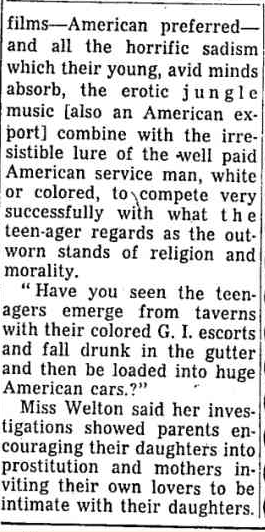
Posted By: Paul - Thu Jul 27, 2017 -
Comments (6)
Category: Antisocial Activities, Culture and Civilization, Family, Sexuality, Foreign Customs, 1950s, Europe, North America
| Get WU Posts by Email | |
|---|---|

| Who We Are |
|---|
| Alex Boese Alex is the creator and curator of the Museum of Hoaxes. He's also the author of various weird, non-fiction books such as Elephants on Acid. Paul Di Filippo Paul has been paid to put weird ideas into fictional form for over thirty years, in his career as a noted science fiction writer. He has recently begun blogging on many curious topics with three fellow writers at The Inferior 4+1. Chuck Shepherd Chuck is the purveyor of News of the Weird, the syndicated column which for decades has set the gold-standard for reporting on oddities and the bizarre. Our banner was drawn by the legendary underground cartoonist Rick Altergott. Contact Us |

